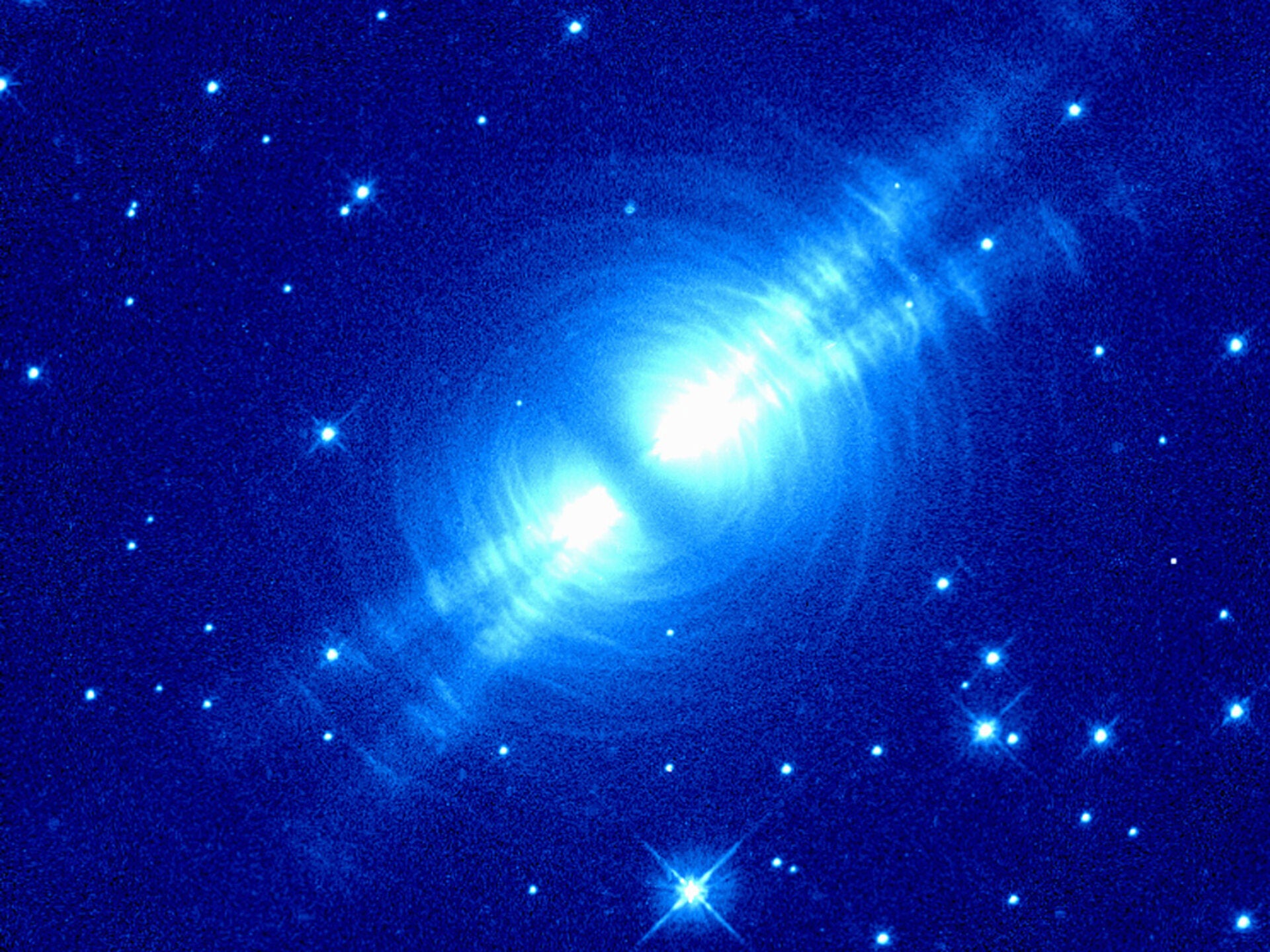
After stars use up all the fusible hydrogen in their cores, the ones that are up to around three times the mass of our Sun evolve off the main sequence and undergo two red giant phases. During the second phase, the star expels its outer layer as a shell of expanding gas, known as a planetary nebula. Catching a planetary nebula in the act of birth is difficult to do, since it is so short lived. The phase lasts perhaps only 2,000 years, the blink of an eye, astronomically speaking. Nonetheless, we have captured this moment.
The aptly named Egg Nebula, lying 3,000 light-years away in the constellation Cygnus, vibrantly shows us the tremendous forces at work while a protoplanetary nebula transitions to a planetary nebula. Concentric ripples — like those in a still pond after a pebble has been tossed in — expand away from the central star. The star itself is hidden from our direct view by a perpendicular belt of thick dust, shown to be composed largely of carbon, a byproduct of the nuclear fusion inside the core of the star.
Analysis of the starlight scattered by the dust shows that the central star is a yellow-white type F (these stars are about 1.0 to 1.4 times the Sun’s mass). Its surface temperature is likely to be around 1,620 degrees Fahrenheit (900 degrees Celsius) hotter than our Sun, but not hot enough to ionize the gas clouds that have been expelled. However, eventually the star’s temperature will increase enough to trigger the formation of a planetary nebula.









